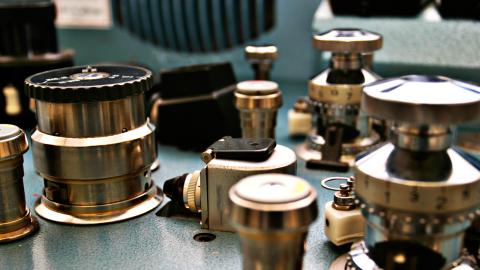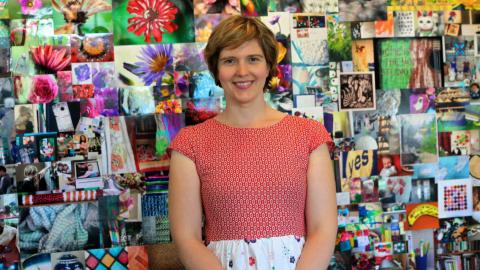
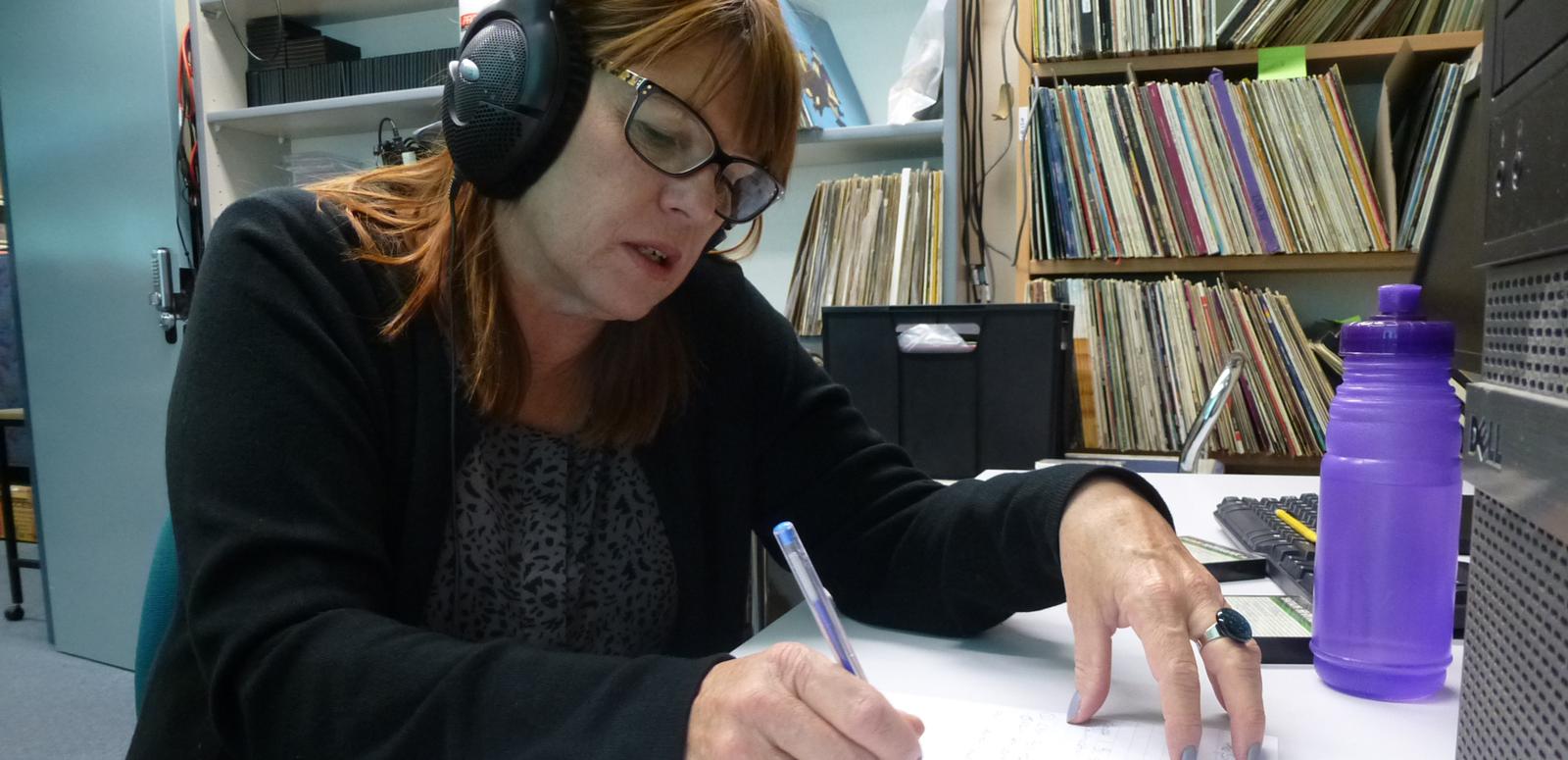
Staff Profile: Karen Hewitt
Was music always a big part of your life?
Karen Hewitt: My Mum loved music so the house was full of her favorites: Roy Orbison, Glen Campbell, John Denver and The Seekers. In 1974, the year Countdown began, Sundays became my favourite day of the week. From then on I was obsessed with popular music and studied every album cover I could get my hands on. I knew then that I wanted to become a recording engineer.
How did you get your start in the industry?
I sent Ted Albert a letter asking for a job. He was a true visionary in the music industry, and took a chance employing me, the country’s first female trainee at Alberts Studios, Sydney. I was 16 when I started my apprenticeship. Afterwards I wanted to learn more about acoustics, so I moved to Melbourne to work for Graham Thirkell at Platinum Studios.
Graham was a genius. The studio predominantly made its money from jingle recordings in the daytime, and I did the midnight to dawn sessions, which were mainly band demos for record companies. Most never got signed but I did record Kate Ceberano’s first time in a studio, as well as the Indigenous band No Fixed address. Later I went to work for John French at his custom-built mud brick studio, Fast Forward. This studio, in my opinion, was the best in Australia. John was an amazingly talented recording engineer; from him I learned how to give recorded sound depth and space, and to translate what producers and musicians wanted. During this time I worked on albums for the bands Goanna and Men at Work.
After Fast Forward I took the leap to be a freelance engineer and worked mainly out of Metropolis Studios in Melbourne (formally Bill Armstrong Studios).
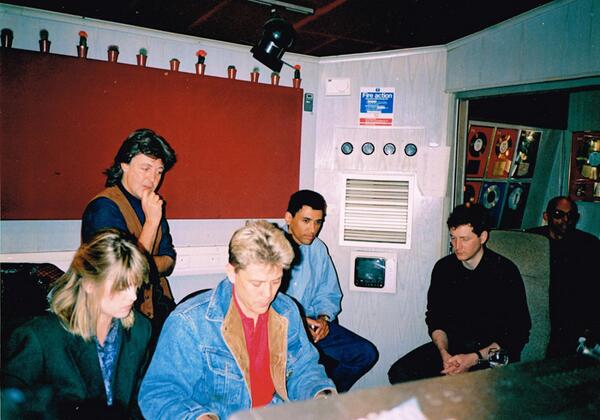
Karen (left) in the studio with Paul McCartney (back).
What led you to leave Australia for the UK?
I was going to engineer John Farnham’s album, Whispering Jack, but I had doubts that it would ever eventuate. Around the same time, amazing productions were coming out of the UK: artists like Kate Bush, Peter Gabriel and Frankie Goes to Hollywood. I was hooked. I felt I had to be there and work with these people! My Dad bought me a one-way ticket and off I went. My first job in England was as an assistant engineer at Manfred Mann’s studio The Workhouse in south-east London. From there I was employed as a sound engineer for Stock Aitken and Waterman, and spent six years with them.
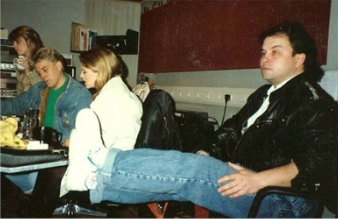
Karen (left) in the studio with Kylie Minogue (centre).
You must have worked with a lot of big names during that time.
Yes, I recorded Dead or Alive, Bananarama, Kylie Minougue, Rick Astley, Donna Summer and Paul McCartney. In my time at the Hit Factory, as it became known, Stock Aitken and Waterman produced more than 100 top 40 songs and sold in excess of 40 million records.
Do you have any good anecdotes from that time?
Not many people know the story behind Kylie Minogue coming to work with Stock Aitken and Waterman. Mushroom Records and her manager Terry Blamey were keen to develop an ongoing relationship with Stock Aitken and Waterman. Pete Waterman agreed a song would be written for Kylie, and set a recording date for her to come to the studio to lay down the vocal track. Unfortunately Pete had forgotten about the meeting and not told anyone.
Kylie arrived at the studios for her vocal session. It was her last day in London and she was flying back to Australia later that afternoon. As she waited downstairs the place went into turmoil as there was no song for her to record. A heated conversation ensued between Pete and Mike Stock. 'Write a song in three hours then!’, said Mike. 'Three hours! She should be so lucky’, was Pete’s reply. That was the light bulb moment.
Most of Stock Aitken and Waterman’s songs are love songs or about personal relationships. Mike Stock began thinking about how busy Kylie’s life must be with her acting commitments on Neighbours, and how she must have no time for a romantic life. That is how 'I Should Be So Lucky’ was written, and Kylie’s vocal recorded in less than two hours. It became a huge hit, and the NFSA added it to Sounds of Australia in 2011, to acknowledge its importance to Australian popular culture.
I feel very blessed and lucky to have worked in the music industry at its peak and to have been mentored by generous and talented people.
Karen on the job with the pyrotechnics crew
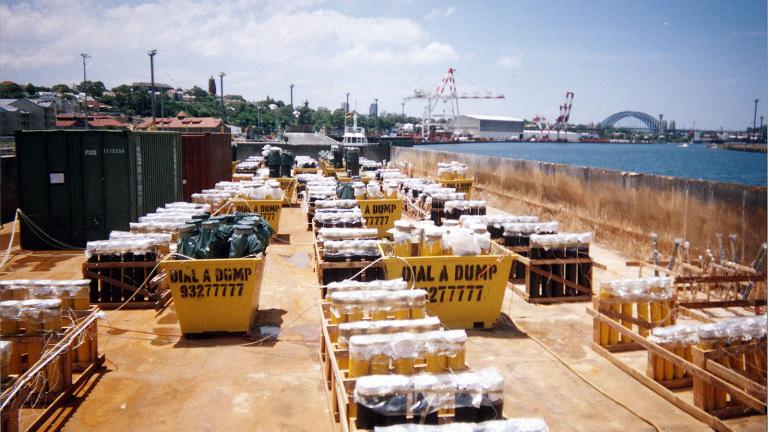
Pyrotechnics for the 2000 Sydney Olympics
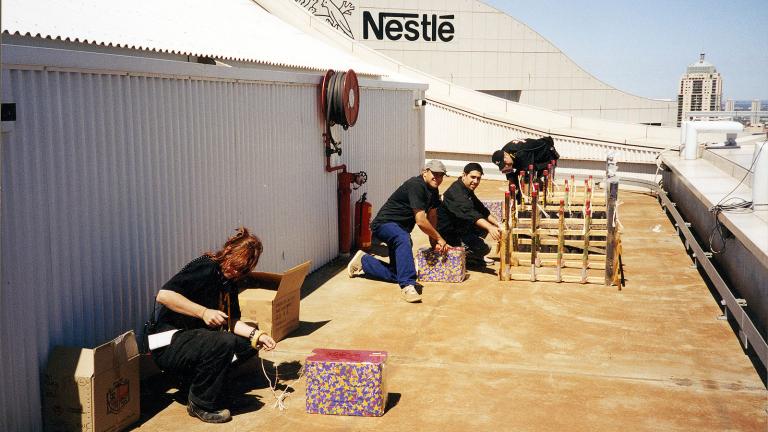
Karen (left) and crew preparing pyrotechnics for New Year's Eve, Sydney 2000.
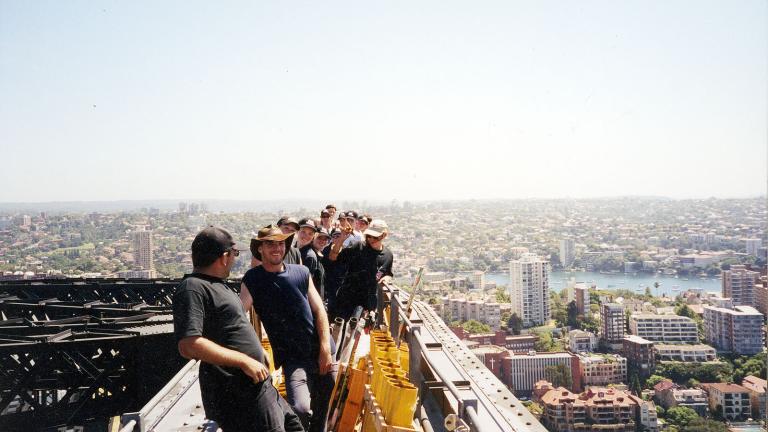
Karen (white peaked cap) with crew installing pyrotechnics on top of the Sydney Harbour Bridge.
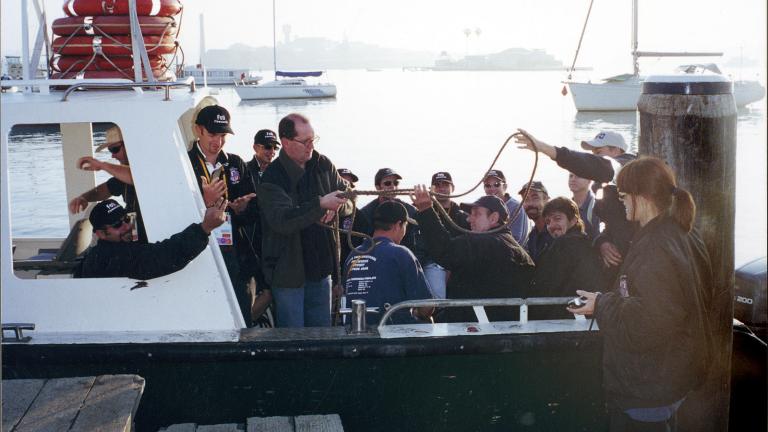
Karen with pyrotechnics crew on Sydney Harbour.
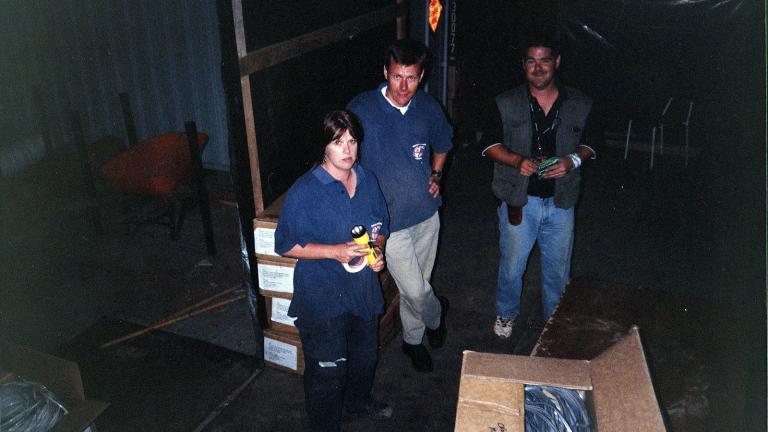
Karen with pyrotechnics crew in Canada.
Do you have a favourite item in the collection?
The NFSA collection is a treasure trove of artefacts. On the audio side we cover the whole spectrum from wire recordings and wax cylinders up to 24-track master tapes and born-digital material. My favourite though is this clip of people rollerskating at the Brisbane Roller Rink around 1910. I came across it by accident one day. It captures the mood of the day perfectly and I just love it.
This staff profile was published in November 2016 while Karen was Audio Services Preservation Officer and an Assistant Curator at the NFSA.
The National Film and Sound Archive of Australia acknowledges Australia’s Aboriginal and Torres Strait Islander peoples as the Traditional Custodians of the land on which we work and live and gives respect to their Elders both past and present.
